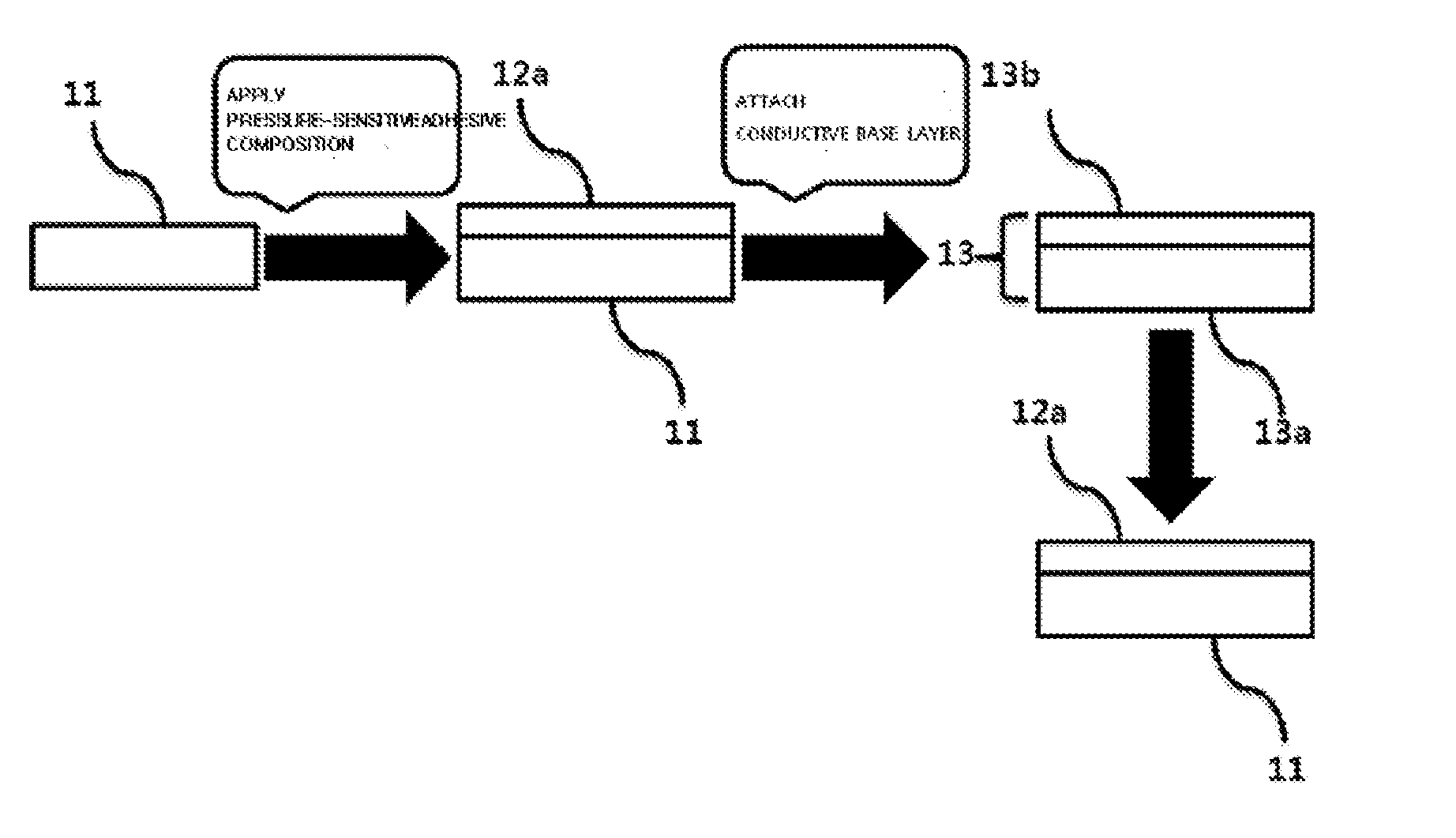Conductive film and production method thereof
a technology of conductive film and production method, which is applied in the direction of conductive layer on insulating support, packaging, synthetic resin layered products, etc., can solve the problems of degrading the optical property of the conductive film and the difficulty of removing the bubbles generated therein, and achieve excellent peeling strength
- Summary
- Abstract
- Description
- Claims
- Application Information
AI Technical Summary
Benefits of technology
Problems solved by technology
Method used
Image
Examples
example 1
[0110]A pressure-sensitive adhesive composition was prepared by mixing a mixture solution including 94 parts by weight of butyl acrylate (BA) and 6 parts by weight of acrylic acid (AA) with 1 part by weight of a toluene diisocyanate crosslinking agent with respect to 100 parts by weight of the mixture solution. A pressure-sensitive adhesive layer was formed by directly applying the pressure-sensitive adhesive composition to both sides of a polyethyleneterephthalate base layer, and dividing the polyethyleneterephthalate to which the pressure-sensitive adhesive composition was applied into four sections and then drying the polyethyleneterephthalate at 80 to 140° C. in an oven. A double-side conductive film was manufactured by attaching a conductive base layer by means of the pressure-sensitive adhesive layer formed on both sides of the polyethyleneterephthalate. A peel strength of the double-side conductive film is as shown in Table 1 below. Also, the double-side conductive film was a...
example 2
[0111]A pressure-sensitive adhesive composition was prepared by mixing a mixture solution including 94 parts by weight of butyl acrylate (BA) and 6 parts by weight of acrylic acid (AA) with 1 part by weight of a toluene diisocyanate crosslinking agent with respect to 100 parts by weight of the mixture solution, and the double-side conductive film was manufactured by the same method as described in Example 1. Peel strengths of the double-side conductive film and detection results for bubbling are shown in Tables 1 and 2 below.
example 3
[0112]A pressure-sensitive adhesive composition prepared by mixing a mixture solution including 50 parts by weight of 2-ethylhexyl acrylate, 40 parts by weight of methyl acrylate and 10 parts by weight of 2-hydroxyethyl acrylate with 0.25 parts by weight of an isocyanate crosslinking agent with respect to 100 parts by weight of the mixture solution was directly applied to both sides of a polyethyleneterephthalate base layer, and then a conductive film was manufactured by the same method as described in Example 1. Peel strengths of the double-side conductive film and detection results for bubbling are shown in Tables 1 and 2 below.
PUM
| Property | Measurement | Unit |
|---|---|---|
| temperature peel strength | aaaaa | aaaaa |
| temperature peel strength | aaaaa | aaaaa |
| temperature | aaaaa | aaaaa |
Abstract
Description
Claims
Application Information
 Login to View More
Login to View More - R&D
- Intellectual Property
- Life Sciences
- Materials
- Tech Scout
- Unparalleled Data Quality
- Higher Quality Content
- 60% Fewer Hallucinations
Browse by: Latest US Patents, China's latest patents, Technical Efficacy Thesaurus, Application Domain, Technology Topic, Popular Technical Reports.
© 2025 PatSnap. All rights reserved.Legal|Privacy policy|Modern Slavery Act Transparency Statement|Sitemap|About US| Contact US: help@patsnap.com



